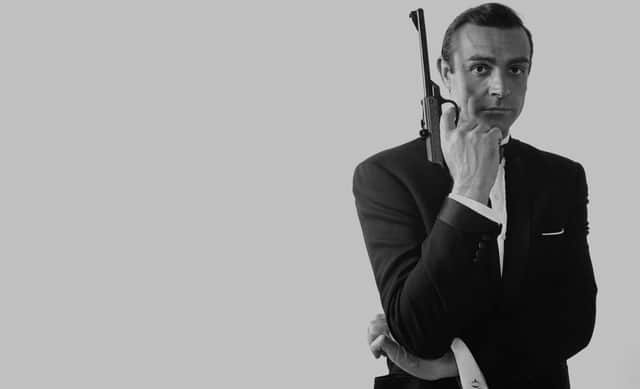Sean Connery: the original James Bond


FOR an entire generation, Sean Connery is James Bond.
In his breakthrough role, Connery achieved that rare instance of acting perfection, becoming synonymous with the globetrotting, womanising secret agent with a licence to kill in a flawless marriage between actor and role.
It was a character that catapulted Connery from a little known actor to a pop culture icon and saw his portrayal of 007 voted the third greatest hero in cinema history by the American Film Institute behind Gregory Peck’s Atticus Finch and Harrison Ford’s Indiana Jones.
Advertisement
Hide AdAdvertisement
Hide AdBorn in Fountainbridge on August 25, 1930, Connery’s ascent to stardom came from relatively humble beginnings. At 13, he earned 21 shillings (a guinea) a week as a barrow work at what was then known as the St Cuthbert’s Co-operative Society’s Corstorphine Dairy. He also worked as a labourer, a lorry driver, a coffin polisher and a lifeguard at the former open air swimming baths at Portobello, however it wasn’t until Connery took a part time role backstage at the King’s Theatre that the idea of becoming an actor appealed to him.
According to Dr Jonny Murray, director of undergraduate studies at Edinburgh College of Art, Connery’s background contributed greatly to his acting success.
“There was a rawness to the roles that Connery took on in his career, and I think his past careers contributed to that,” he says.
“British audiences were used to the kind of elitist, RADA-trained actors they’d seen for years, so when Connery arrived with a Scottish accent and a rebellious attitude, it was quite shocking in a way and instantly distinctive.”
After debuting in a small role as part of a production of South Pacific in Edinburgh, Connery rose through the acting ranks, eventually landing a major film role in the Disney production “Darby O’Gill and the Little People,” in 1959. While the film earned major praise, Connery was described as “merely tall, dark and handsome,” by critics who paid little attention to his acting prowess.
Eager to prove them wrong, Connery reluctantly signed on to be the first actor to portray Ian Fleming’s James Bond on the screen, despite reservations from the author himself, who dubbed him “an overgrown stunt man.”
Fleming’s fears were allayed however by the commercial success of Connery’s performance in 1962’s Dr No, so much so that Fleming changed Bond’s heritage to half-Scottish, half-Swiss to fit better with Connery’s portrayal.
He would stay in the role for five films between 1962 and 1967, before reprising his role in Diamonds are Forever in 1971 - though he also appeared in 1983’s remake of Thunderball, entitled “Never Say Never Again.”Connery became the defining Bond actor, with his trademark Scottish drawl greatly influencing later iterations of the character.
Advertisement
Hide AdAdvertisement
Hide Ad“The Scottish lilt that Connery played Bond with was hugely significant because it was far removed from Fleming’s vision of the character,” says Dr Murray.“He was so different from the British, aristocratic, elitist that Fleming created, but he was still able to get across the ruthlessness and raw masculinity of the character.“It set the standard for every Scottish actor that followed and it showed that ‘Scottishness’ was no inhibition to his acting quality.”
After departing the Bond franchise, Connery went on to play a number of critically acclaimed roles, portraying Henry Jones in the Indiana Jones franchise and scooping an Academy Award for Best Supporting Actor for 1988’s The Untouchables.
He was voted the greatest living Scot in 2004 before retiring from acting in 2006.